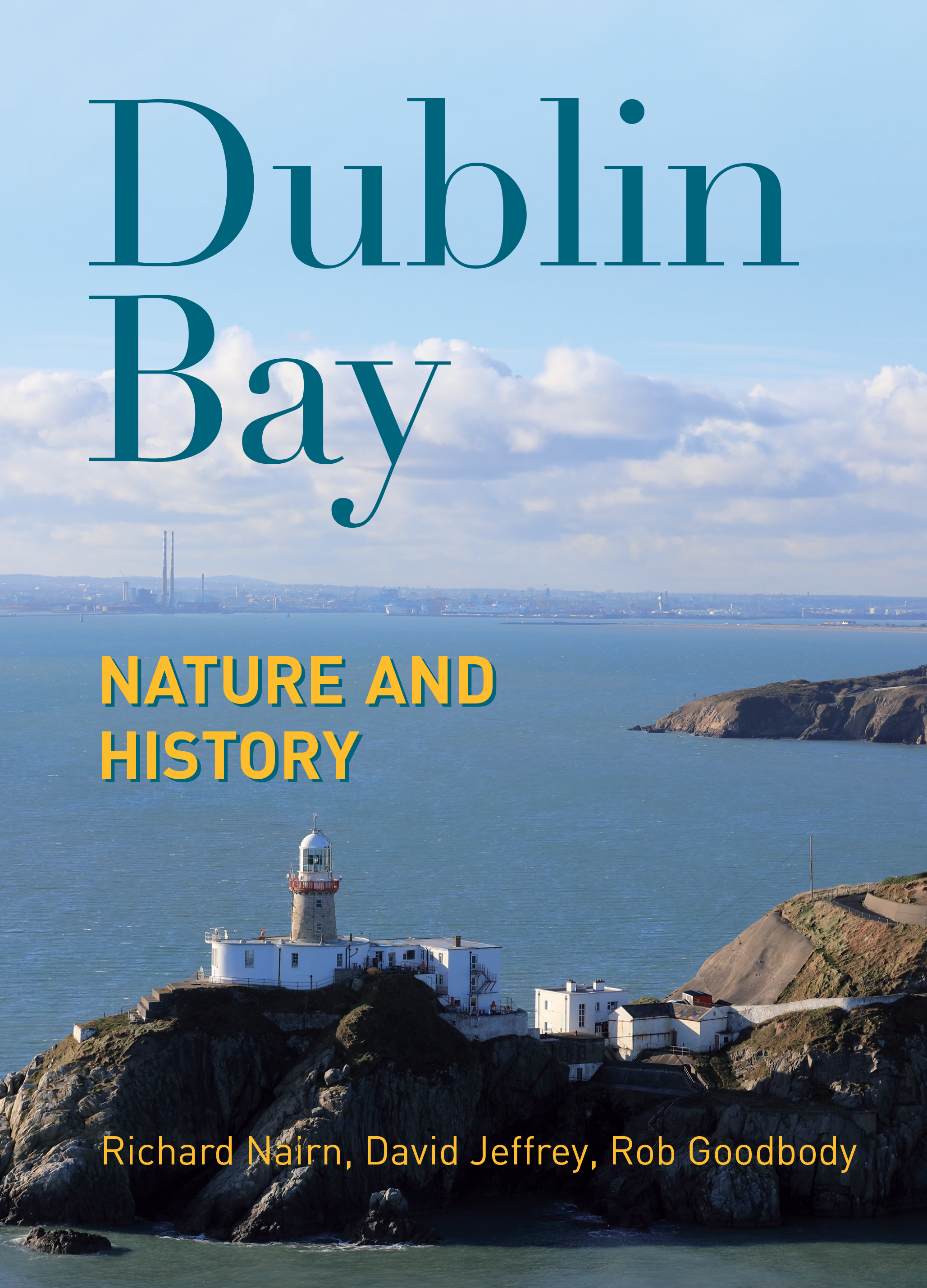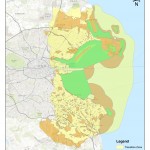On June 24th 2015, the designation of Dublin Bay Biosphere was…
Dublin Bay – Nature and History
On the fringe of Dublin’s hive of human activity, a miraculous coastal ecosystem carries on as it has done since the last Ice Age. Beaches, saltmarshes, rocky shores, cliffs, islands and offshore sandbanks all support millions of tiny creatures and thousands of migratory birds from as far afield as Arctic Canada and tropical Africa. Nature is intimately linked with the people whose lives unfold around it, and over a million people have direct access to Dublin Bay. We need to understand how we are affecting its ecosystem, from the disturbance of birds to dredging of shipping channels and the longer-term implications of climate change.
A new book to aid in this understanding, Dublin Bay – Nature and History, was launched on November 2nd 2017, and was supported by both Dublin Port Company and Dublin Bay Biosphere Partnership. The purpose of UNESCO Biospheres is to inspire a positive future by connecting people and nature today. I’m delighted that Dublin Bay Biosphere Partnership can support this kind of work, which shares the authors’ extensive knowledge and helps to strengthen the connection between people and nature in Dublin Bay. On a personal note, I was taught by one of the authors, Professor David Jeffrey. Some time ago now, when I was an undergraduate student at Trinity College, Professor Jeffrey brought my class to North Bull Island. That journey was my first experience of the fascinating ecology of Dublin Bay and helped to set me on the path to my present role.
David Jeffrey’s research was crucial in the designation of the “first generation” UNESCO Biosphere Reserve at North Bull Island in 1981, which helped people to recognise the amazing diversity of nature that makes North Bull Island its home. In 2015, the UNESCO Biosphere designation was extended to the whole of Dublin Bay. Richard Nairn has a comprehensive knowledge of ecology, nature conservation and environmental management in Ireland and has swum, fished, sailed and walked throughout Dublin Bay.
Richard and David are perfectly complemented by Rob Goodbody, a geographer and planner with an excellent knowledge of the built and cultural heritage of Dublin Bay. It is all three authors’ understanding of the connections between these different strands of history that make this book special. Through their scholarship and multidisciplinary approach, this book tells the story of Dublin Bay in an engaging, accessible and visually beautiful way.

The development of the port city has been mirrored by major changes in the coastal environment. You can learn how the creation of Dublin Port caused the formation of Bull Island, or how the cockles and mussels immortalised in ‘Molly Malone’ caused typhoid fever throughout the city. The human and natural components of the bay have learned to coexist and, in some cases, even to depend on each other. The bay has stretched its arms widely to embrace countless generations of Dubliners: it is a life support system, an economic asset and an invaluable recreational resource.
This new look at a familiar seascape authoritatively explains its importance to the past, present and future of our city and country. I have no doubt that this book will be an invaluable resource for any reader who wishes to know this place more intimately, from students and researchers, to members of the local communities who use the Bay.
About Dublin Bay Biosphere Dublin Bay Biosphere is part of a worldwide network of 672 UNESCO Biospheres. Biospheres represent a unique tool for international cooperation through sharing knowledge, exchanging experiences, building capacity and promoting best practices. All Biospheres have three aims:
• To conserve biodiversity and cultural diversity
• To foster sustainable development
• To generate knowledge, which underpins the other two aims.
Dublin Bay – Nature and History is a superb example of the third aim of UNESCO Biospheres – to generate knowledge in order to support conservation and sustainable development.







